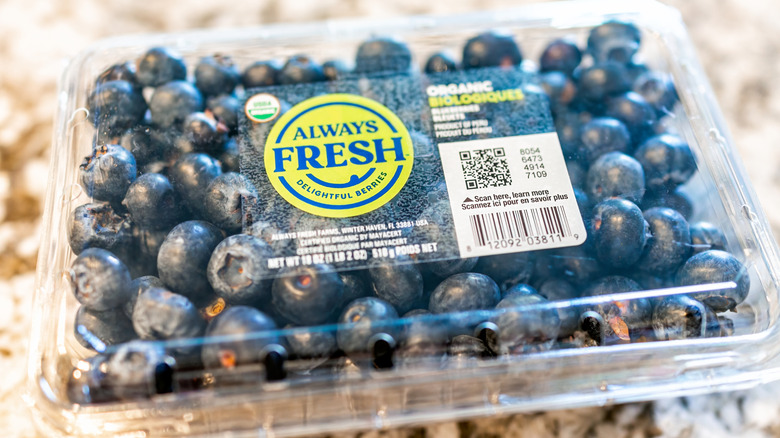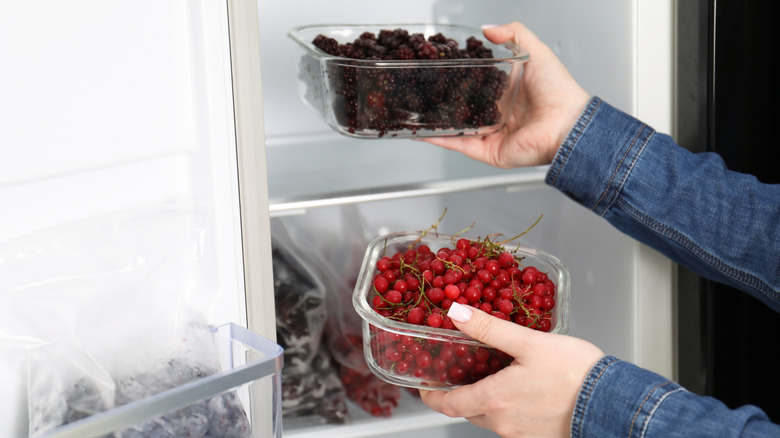The Best Place To Store Berries In Your Fridge For Maximum Nutrition
Berries are the fun part of a healthy diet. They're nature's little sweet treats that do a whole lot for your body. Recent studies show berries can help you age more gracefully by lowering your risk for dementia and other chronic diseases. Plus, they also might improve mental health.
In order to get the most out of your berries, you have to eat them when they're the most nutrient dense, and there's a thin line between peak ripeness and spoiled. How long your perfectly ripe berries last largely depends on where you put them after you buy them — there's a chance you've been storing blueberries wrong this whole time, and one or two storage mistakes will turn your raspberries to mush. Thankfully, you can preserve your berries at their peak ripeness a little longer with strategic storage techniques, like putting them in the fridge, for starters.
Refrigeration slows spoilage and helps preserve all the nutrients in berries, and there's an optimal place to store them. The FDA recommends storing berries at 40 degrees Fahrenheit or below. The perfect zone is in the coldest part of your fridge, in the very back. Make sure you store all kinds of berries in containers, ideally glass or ceramic, that promote air flow in order to help reduce the likelihood of mold (for closed storage vessels, always loosely cover the top). Also, don't wash them before refrigerating — food professionals suggest only storing unwashed berries because the extra moisture increases their spoilage rate.
Ripe berries can last a few days to two weeks in the coldest part of the fridge
Berries have different shelf lives, even if they are stored in the absolute best conditions. In general, most berries last between three days and a week in the fridge. Blueberries are probably the longest lasting of the most popular berry types — they'll last up to two weeks in the fridge if all the conditions are perfect. Strawberries and raspberries are a little more perishable because of their higher water content. Regardless of the type of berry, though, you'll be able to better preserve them at peak nutrition if you start with the right decisions at the grocery store.
Before you can sit down to a bowl of nutrient-packed berries, you have to pick them out in the produce section. Look for a container that doesn't have any moldy fruit in it, stay away from any mushy berries, and walk away if you see any bruising. Choose berries that are full-bodied and not shriveled, with vibrant colors. Blueberries should have a dark blue color and strawberries should be bright red instead of a darker, maroon color. Store those perfect fruits in the back of the fridge and wash them right before eating to maintain maximum nutrients for as long as possible.

